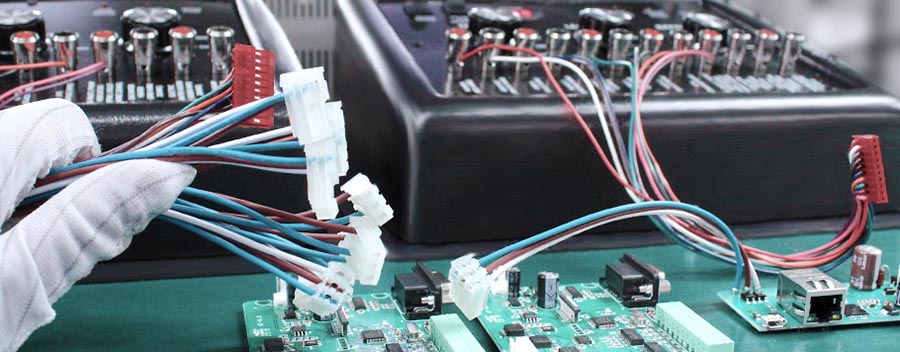In the PCBA (Printed Circuit Board Assembly) processing industry, rapid prototyping capability is one of the most important indicators for assessing a factory’s production capacity. Proofing is a key step in the production process, especially in the product design and validation stage, it directly affects the product development progress and market launch speed. how to optimise the proofing process of PCBA factories to improve the rapid proofing ability, become the key to enhance the competitiveness of enterprises in the market.

1、The importance of rapid prototyping
Rapid sampling refers to the customer’s design requirements, in a short period of time to complete the production of the first batch of samples. For PCBA factories, rapid prototyping is not only a necessary means to test the design programme and verify the circuit function, but also an important basis for customers to decide whether to carry out mass production. Efficient rapid prototyping can help customers quickly assess the performance, reliability and functionality of the board, laying the foundation for subsequent mass production.
Shorten the product development cycle: Rapid prototyping can effectively shorten the time from design to market and improve the market response speed of the product.
Reduce the risk of product development: through sampling to verify the design, to avoid the discovery of design defects after mass production, reduce the possible risks and costs in the development process.
Enhance customer trust: PCBA factories to provide high-quality, responsive sampling services can win the trust of customers, paving the way for subsequent long-term cooperation.
2、Assess the PCBA factory’s rapid sampling capabilities
Evaluation of PCBA factory’s rapid sampling capabilities, need to be analysed from a number of dimensions, including sampling cycle, process capability, equipment level, technical support and so on.
2.1 The length of the sampling cycle
The sampling cycle directly reflects the PCBA factory’s rapid response capability. Generally speaking, PCBA sampling cycle should be controlled between a few days to a week. Shorter sampling cycle means that the factory in the production resource scheduling, technical support and procurement of raw materials and other aspects of efficient coordination capabilities.
Standard sampling cycle: According to the factory’s production process, the standard sampling cycle should be adjusted appropriately according to customer demand and design complexity. Simple single-panel sampling can generally be completed within 3-5 days, while complex multilayer or high-frequency circuit boards may require a longer cycle.
Emergency sampling cycle: Some PCBA factories provide emergency sampling services, for urgent single customer needs, sampling completed within 24-48 hours. This type of service usually requires the factory to have flexible production arrangements and high production resource scheduling capabilities.
2.2 Process capability and technical support
PCBA sampling is not only a routine operation in the production process, but also a high-tech work, involving a variety of processes and technologies. For example, surface mount technology (SMT), BGA welding, miniaturisation design, HDI (High Density Interconnect) and other technologies may appear in the sampling stage. The technical capability of the factory will have a direct impact on the quality and progress of the proofing.
Multi-process support: Whether the factory is able to handle multiple types of board proofing, such as high-frequency, thick copper, flexible circuit boards, etc., is an important criterion for evaluating its rapid prototyping capability.
Process stability: rapid prototyping not only requires fast speed, but also to ensure stable quality. The factory needs to have a strict process control system, such as SMT placement accuracy, welding quality, etc., to ensure that the sample can also meet the design requirements in a short period of time.
2.3 Equipment level and automation
The level of equipment is crucial to the sampling capacity of PCBA factories, especially in the processing of complex circuit boards, advanced equipment can ensure high production accuracy and speed.
Equipment Configuration: Evaluate whether the factory is equipped with advanced automation equipment, such as high-speed SMT placement machines, automatic optical inspection (AOI) equipment, laser marking machines and so on. These equipments can improve production efficiency, shorten the sampling cycle, and ensure product quality.
Degree of automation: A factory with a high degree of automation can carry out production scheduling and material allocation more efficiently, reduce errors caused by manual operation, and thus improve the speed and accuracy of proofing.
2.4 Raw material supply and management
PCBA prototyping requires the use of various electronic components and raw materials, and the timely supply of raw materials is crucial to rapid prototyping. Evaluating the factory’s raw material management capability, especially the inventory of commonly used components, is an important aspect of evaluating the proofing capability.
Raw material inventory: Whether the factory has an abundant inventory of raw materials to ensure that production can start quickly after the customer places an order. This plays an important role in speeding up the sampling cycle and reducing procurement delays.
Supplier collaboration: with high-quality component suppliers to establish a stable relationship can help PCBA factories to get a faster supply of components, thereby accelerating the sampling process.
3、Strategies to improve sampling efficiency
In order to improve the sampling capacity, PCBA factories can take the following strategies:
Optimise the production process: Improve the production efficiency and shorten the sampling cycle by simplifying the process flow and optimising the process path.
Strengthen technical training: Regularly train technicians to improve their proficiency in various process technologies to ensure that complex sampling tasks are handled within a short period of time.
Implement digital management: improve production scheduling efficiency and achieve efficient use of resources through digital management of ERP and MES systems.
Conclusion
Rapid sampling capability not only reflects the production level of the PCBA factory, but also directly affects customer satisfaction and market response speed. By evaluating multiple dimensions such as sampling cycle, process capability, equipment level and raw material management, factories can continuously improve their sampling capability and thus occupy a favourable position in the fierce market competition.


